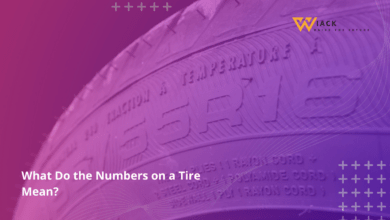How to Remove Paint from Your Car?

Did you know that the average car has up to 8 pounds of paint on its surface? That’s a lot of paint to remove if you’re looking to restore your vehicle’s finish or prepare it for a new coat. Whether you’re dealing with unwanted paint splatters, planning a full paint restoration, or just curious about vehicle paint correction, this guide will walk you through the process of safely removing paint from your car.
Preparation
Before diving into the world of car paint maintenance, it’s crucial to properly prepare. This step can make the difference between a successful paint removal job and a costly mistake.
Gather Your Supplies
To start your paint removal journey, you’ll need to gather the right tools and materials. Here’s a list of essential items:
- Paint remover for cars: Choose a product specifically designed for automotive use.
- Plastic scraper or putty knife
- Sandpaper (various grits)
- Clay bar kit
- Microfiber towels
- Bucket
- Car wash soap
- Wax or sealant
- Protective gloves
- Safety goggles
- Respirator mask
When selecting a chemical paint remover for cars, consider brands like 3M or Rust-Oleum, which are known for their quality car paint removal products. Remember, the best paint remover for cars will depend on the type of paint you’re removing and the surface underneath.
Protect Yourself
Safety should always be your top priority when working with chemicals and abrasive materials. Here’s how to protect yourself:
- Wear chemical-resistant gloves to protect your hands from harsh substances.
- Use safety goggles to shield your eyes from splashes and debris.
- Wear a respirator mask to avoid inhaling fumes or dust particles.
- Dress in long sleeves and pants to protect your skin.
Remember, proper safety gear for paint removal is not optional – it’s essential for your health and well-being.
Protect Your Car
Before you start the paint removal process, take steps to protect the parts of your car that you don’t want to be affected:
- Work in a shaded, well-ventilated area to prevent the paint remover from drying too quickly.
- Cover any areas you don’t want to be stripped with plastic sheeting and masking tape.
- Remove or cover any trim pieces that could be damaged by the paint remover.
- Place a drop cloth under the car to catch any drips or spills.
By taking these precautions, you’ll minimize the risk of accidental damage to your vehicle during the paint removal process.
Removal Methods
There are several methods for removing car paint safely. We’ll cover four popular techniques: using a paint remover, heat gun, sandpaper, and clay bar. Each method has its pros and cons, so choose the one that best suits your needs and skill level.
Using a Paint Remover
Chemical paint removers can be highly effective for stripping large areas of paint quickly. However, they require careful handling and proper safety precautions.
Choose the Right Remover
Select a paint remover specifically formulated for automotive use. These products are designed to be effective on car paint without damaging the underlying metal or plastic.
Apply the Remover
- Put on your safety gear.
- Apply the paint remover evenly using a brush or roller, following the manufacturer’s instructions.
- Allow the remover to sit for the recommended time. This can vary from a few minutes to several hours, depending on the product and the paint thickness.
Remove the Paint
- Once the paint has bubbled or loosened, use a plastic scraper to gently remove it.
- Work in small sections, being careful not to scratch the underlying surface.
- For stubborn areas, you may need to reapply the remover or leave it on for a longer period.
Clean Up
- Use a car wash soap and water to thoroughly clean the area.
- Rinse well to remove all traces of the paint remover.
- Dry the surface with a microfiber towel.
Using a Heat Gun
A heat gun can be an effective tool for removing paint, especially for smaller areas or spot treatments.
Safety Precautions
- Work in a well-ventilated area to avoid inhaling fumes.
- Keep a fire extinguisher nearby as a precaution.
- Be careful not to overheat the surface, which could warp metal or damage plastic parts.
Apply Heat
- Hold the heat gun about 6 inches from the surface.
- Move it slowly and steadily over the paint you want to remove.
- The paint will start to bubble and lift as it heats up.
Remove the Paint
- As the paint bubbles, use a plastic scraper to gently remove it.
- Work in small sections to avoid overheating any one area.
- Be patient and take your time to avoid damaging the underlying surface.
Clean Up
- Allow the surface to cool completely.
- Clean the area with car wash soap and water.
- Dry thoroughly with a microfiber towel.
Using Sandpaper
Sanding is a more labor-intensive method but can be effective for removing paint, especially when dealing with smaller areas or preparing a surface for repainting.
Choose the Right Grit
- Start with a coarse-grit sandpaper (80-120 grit) to remove the bulk of the paint.
- Progress to finer grits (220-400) to smooth out the surface.
- Finish with very fine grit (600-1000) for a smooth surface ready for primer or paint.
Sanding Techniques
- Use a sanding block or electric sander for larger, flat areas.
- Sand in a circular motion to avoid creating deep scratches.
- Apply even pressure and keep the sandpaper moving to prevent gouging.
- Frequently check your progress and switch to finer grits as needed.
Cleaning Up
- Wipe away sanding dust with a tack cloth.
- Clean the area thoroughly with car wash soap and water.
- Dry the surface completely before moving on to the next step.
Using a Clay Bar
While not typically used for full paint removal, a clay bar can be effective for removing surface contaminants and small paint transfer marks.
Preparing the Clay Bar
- Knead the clay bar until it’s pliable.
- Spray the surface with a lubricant (often included in clay bar kits).
Applying the Clay Bar
- Gently rub the clay bar over the surface in a back-and-forth motion.
- Feel for rough spots – the clay will glide more smoothly as contaminants are removed.
- Fold the clay over to expose a clean surface as it picks up contaminants.
Cleaning Up
- Wipe away any residue with a microfiber towel.
- Wash the area with car soap and water.
- Dry thoroughly and inspect the surface.
Finishing Touches
After removing the paint, it’s crucial to properly finish and protect the surface to prevent rust and prepare for any future painting or treatments.
Clean the Surface
- Wash the entire area with car wash soap to remove any remaining debris or chemicals.
- Rinse thoroughly with clean water.
- Dry the surface completely with a microfiber towel.
Wax or Seal the Surface
- Apply a high-quality car wax or sealant to protect the bare surface.
- Follow the product instructions for application and curing time.
- This step is especially important if you’re not immediately repainting the area.
Inspect the Results
- Check the surface in good lighting for any missed spots or imperfections.
- Feel the surface with your hand to detect any rough areas that may need additional attention.
- If you plan to repaint, ensure the surface is smooth and free of any residue.
Seek Professional Help
If you’re not satisfied with the results or encounter any difficulties, don’t hesitate to consult automotive paint shops or detailing professionals. They have the expertise and equipment to handle complex paint removal jobs and can provide advice on next steps for your vehicle.
Tips and Tricks
To ensure the best results and safest experience when removing paint from your car, keep these tips in mind:
Test the Remover First
Always test your chosen paint remover on a small, inconspicuous area first. This will help you gauge its effectiveness and ensure it doesn’t damage the underlying surface.
Work in a Well-Ventilated Area
Whether you’re using chemical removers or sanding, good ventilation is crucial. Work outdoors or in a well-ventilated garage to avoid inhaling harmful fumes or dust.
Be Patient and Persistent
Paint removal can be a time-consuming process. Don’t rush it – taking your time will lead to better results and reduce the risk of damaging your car.
Take Breaks
Paint removal can be physically demanding. Take regular breaks to avoid fatigue, which can lead to mistakes or accidents.
Clean Up Thoroughly
After each step and at the end of the project, clean up thoroughly. This includes properly disposing of any used materials and cleaning your tools.
Dispose of Materials Properly
Chemical paint removers and paint residue can be harmful to the environment. Check with your local waste management facility for proper disposal methods.
Conclusion
Success!
Congratulations! You’ve now learned the basics of how to remove paint from your car. Whether you’re tackling a small spot or planning a full vehicle paint correction, you have the knowledge to approach the task safely and effectively.
Maintenance Tips
To keep your car’s paint looking its best and avoid the need for future paint removal:
- Wash your car regularly to remove contaminants.
- Apply wax or sealant every few months for protection.
- Address any paint damage or chips promptly to prevent rust.
- Consider professional detailing services for deep cleaning and protection.
Remember, while DIY paint removal can be rewarding, there’s no shame in seeking help from professionals for complex jobs. Automotive paint shops and detailing professionals have the tools and expertise to handle even the most challenging paint issues.
By following this guide and using the right techniques, you can successfully remove unwanted paint from your car and maintain its appearance for years to come. Happy detailing!
Get the latest car news, reviews, and prices at Wiack.com. Your one-stop destination for all things automotive.





